My last column was written to you from a tent in the middle of the Nevada desert, amidst a dust storm, in a giant temporary city of 70,000+ people mostly wearing goggles, dust masks, and pasties. In other words, I was at Burning Man. Don’t know what that is? Want to know how the hell I ended up there? Go read this: Burning Art Director. Back? Ok, let’s move on.
I’m home now, safe from the dust storms, but still coughing dust out of every cell (no one told me playa lung was a thing). A lot of people have heard about Burning Man as a mystical life-changing trip, and knew I am not the person who usually chases “transformational” experiences, so I think my going surprised a lot of people. Many people followed my instagram pics during the week and saw a side of Burning Man that tends to not get as much press as topless chicks in gas masks —mainly, the sheer amount—and quality—of art. (Not that there’s anything wrong with topless chicks in gas masks.)
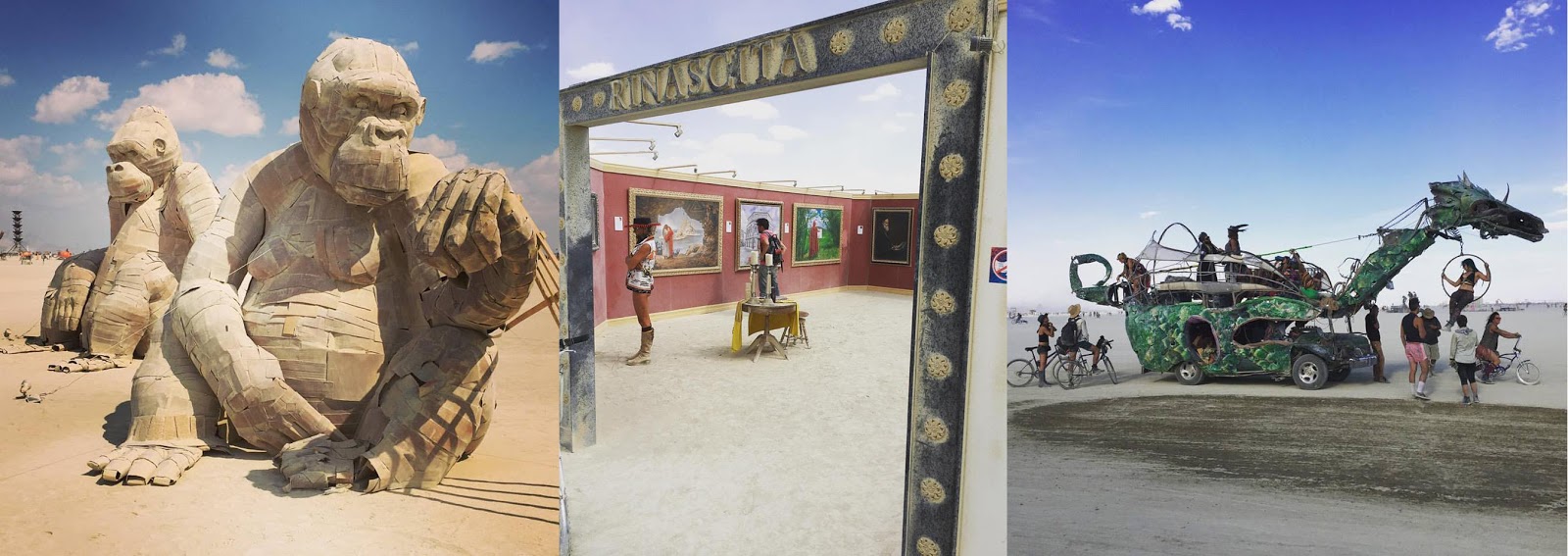 |
| Cardboard gorillas, an art museum gallery freestanding in the middle of the desert, and a fire-breathing dragon art car. |
I went into the trip thinking that Burning Man was roughly 75% rave (electronic music, glowsticks, drugs) and 25% art (mostly rough sculptures made just large enough to make a great bonfire, and a lot of blinky lights attached). I could not have been more wrong. Sure, there are giant sound camps, as they’re called, which have superstar DJs on giant sets, and they do attract big crowds every night. But I would say the ratio I expected is almost perfectly flipped. I would say that art in myriad forms is 75% of Burning Man, and the music party you expect is only 25%. Don’t get me wrong — if you wanted to focus all your time on music and partying you easily could — but there is so much more out there in the desert. In fact, that was one of the most impressive things about the festival — it’s so huge you can make the experience you want out of it. If you wanted to spend your week barhopping, you could. If you wanted to spend your week doing yoga or taking DIY workshops, or having tantric sex in the Orgy Dome, it was there for you to seek out. But you can’t escape the art. In fact, a lot of it is on wheels and chasing you.
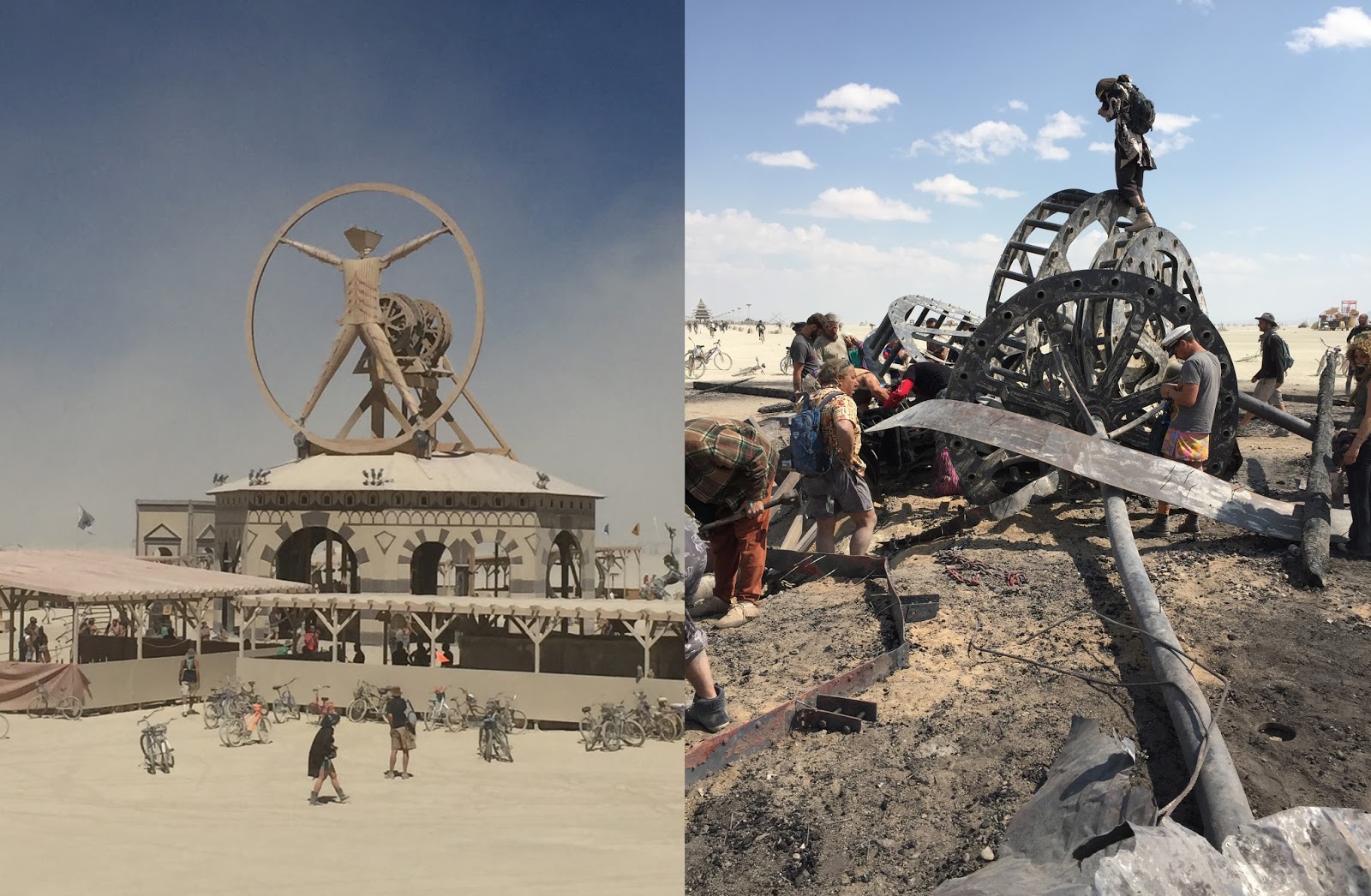 |
| The Man, before and after he burned. |
The two main art pieces every year are the Man and the Temple. Black Rock City is laid out like a clock, and the Man is the center of the clock, and the Temple is at 12:00. Most of the center of the clock face around the Man is empty space, as is the space between 10:00 and 2:00, around and behind the Temple. ALL of this space is reserved for art. Huge climbable sculptures. Interactive kaleidoscopes. Mazes. Small temples. Giant Medusa heads. And around all of that drive the art cars — everything from giant dragons to pirate ships to polygon sheep. We are talking miles of empty space to fill.
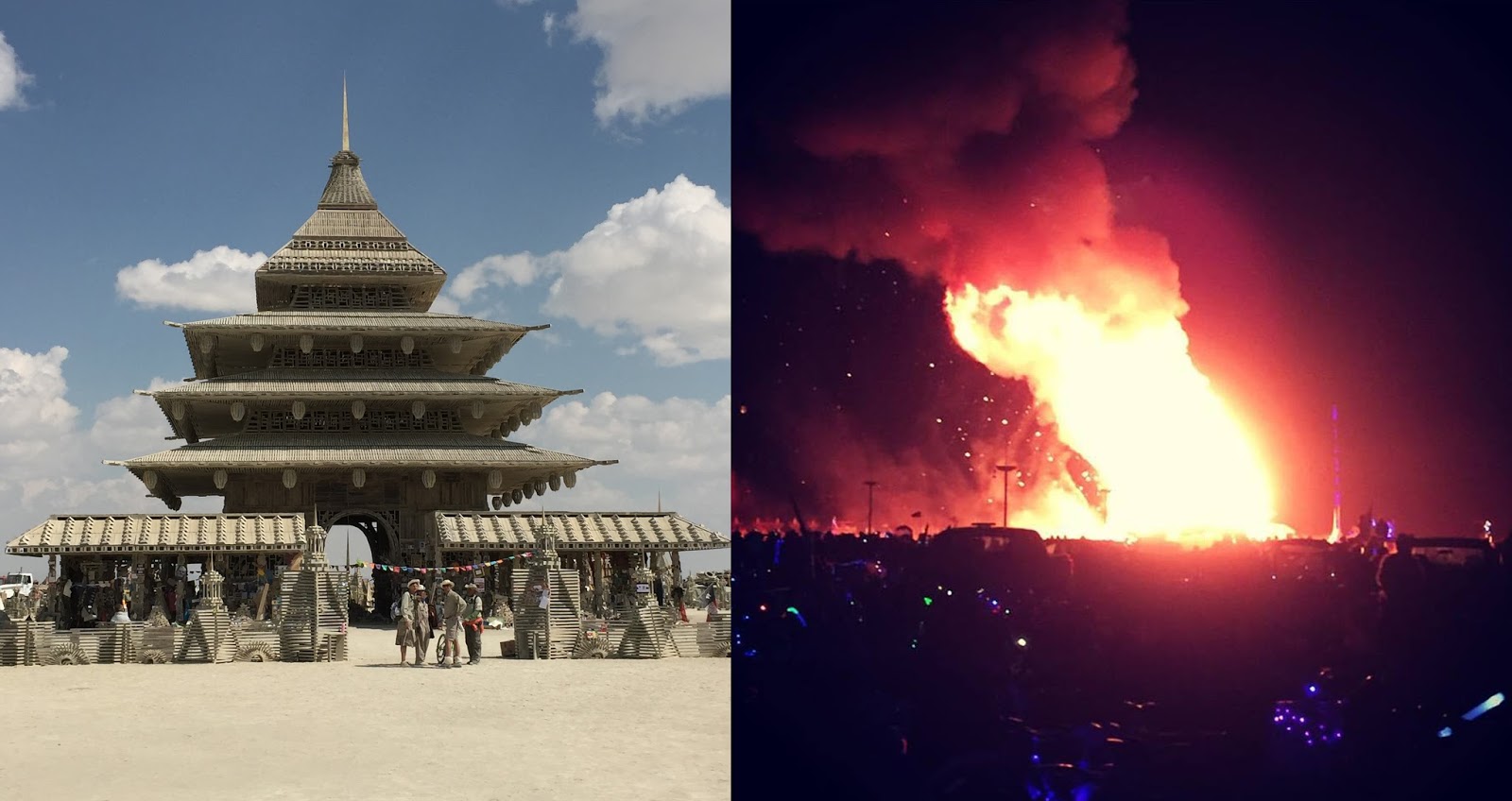 |
| The Temple, before and during burning. This year’s temple architect was David Best. |
There is so much art that a few pictures here can’t hope to contain more than a glimpse. Check out this video reel for a look at a lot of the art, especially the major art pieces — and the aerial shots give a bit of the sense of the sheer scale of the city:
You know what the most amazing thing is about all this art at Burning Man? It’s made for the sheer joy of it. It’s made to be shared in the desert for a week, to the people that are there (and maybe some people on the internet) but then it’s gone. There is no commercial goal here. There’s barely even any publicity or exposure goal here. Most art pieces are damn hard to find credits for. A list of the art Burning Man gave grants to is here, but that’s a slim amount of the art present in Black Rock City. The rest is damn hard to credit. (I know, I’ve been trying.)
There’s an audio tour that you’re supposed to listen to while you’re touring the art while you’re at Burning Man, but if you use google while you listen, you’ll be able to find pictures and video of most of the major pieces:
[soundcloud url=”https://api.soundcloud.com/tracks/277553338″ params=”color=ff5500″ width=”100%” height=”166″ iframe=”true” /]
Artists that are making art for Burning Man and other festivals like it start to become recognized in the community, but often aren’t as well-known outside. And there are artists like Android Jones who are well known in, say, SciFi/Fantasy art and concept art, or fine art and the gallery world, but who wander into this space and are drawn further and further into the festival/event community. I got some chances to talk to some of the artists directly, and they mentioned the challenge of transport, and of building things that can either be burnt or removed without a trace after the week is up, but find the audience’s interaction with their art and sheer joy of it immensely rewarding. They say they also find the chance to make art without the thought of worth or sales really cathartic, and recharges the rest of their work throughout the year. Some artists have come to only make work for festivals.
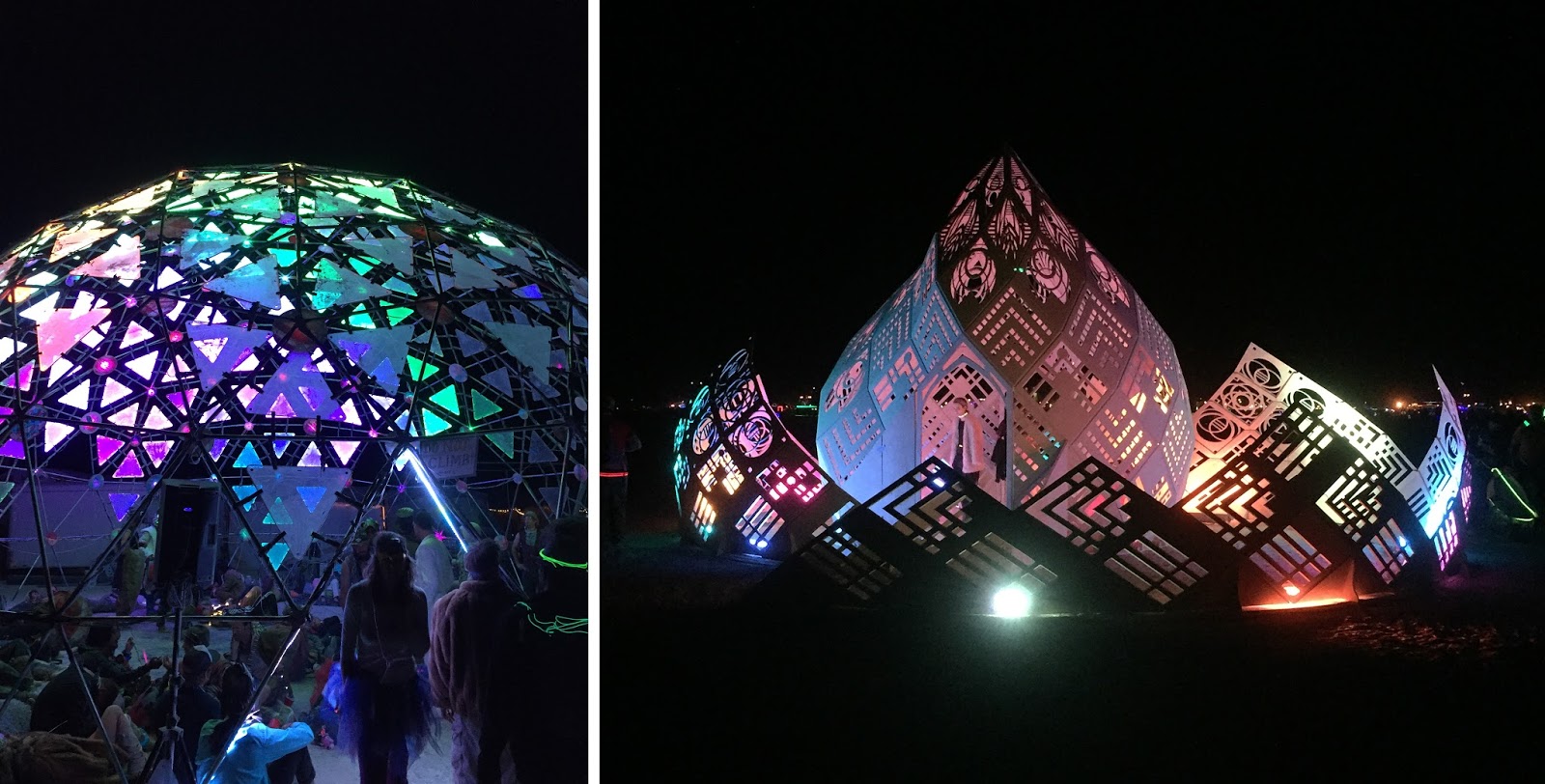 |
| A dome and a small temple created to maximize the dark of night. |
So how does all this art get made? It may not have a commercial goal, but it certainly needs money to get made. A great deal of it is crowd-funded (now often through sites like Indiegogo and Kickstarter, but even before that platform through fundraising events and parties). The Burning Man organization gives out grants as well, although these often don’t cover the full cost of the creation (and removal).
When’s the last time you made art just for the joy of making it? Now, when was the last time you made art just for the joy of 70,000 people seeing it? And climbing over it and playing with it and eventually destroying it? To some artists I’ve talked to since I came home that sounds intriguing. To others, horrifying. All I can say is it was an amazing recharge for the batteries of someone who spends most of her days navigating the middle ground between art and commerce. I think the client-artist relationship fascinating, and incredibly fruitful when it’s working…but sometimes it’s all too easy to lose the joy when you’re so concerned with selling and promoting. I found the transient nature of the Burning Man art installations to be incredibly inspiring — as inspiring as the artistry of the pieces themselves. There’s something about it akin to that feeling when you finally break in a new sketchbook so that there’s mistakes in it. It’s almost freeing in a way — the book can’t be perfect anymore, so some of the pressure is off. When the worries about markets and considerations about trends fall away, what’s left? What would you be able to make in that headspace?
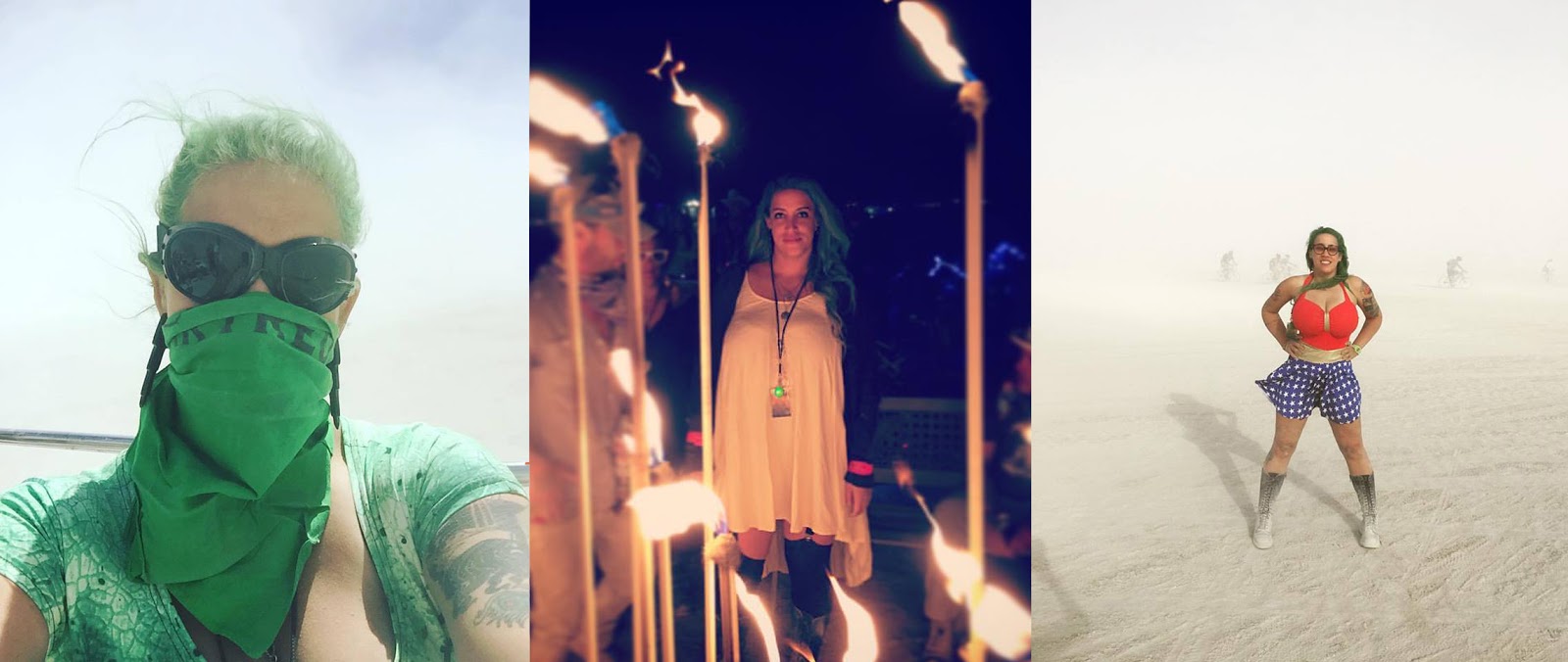 |
| Art Director a la playa |
If you’re curious about how you might get involved with making art at Burning Man 2017 or propose an art piece for official funding, check out this page.



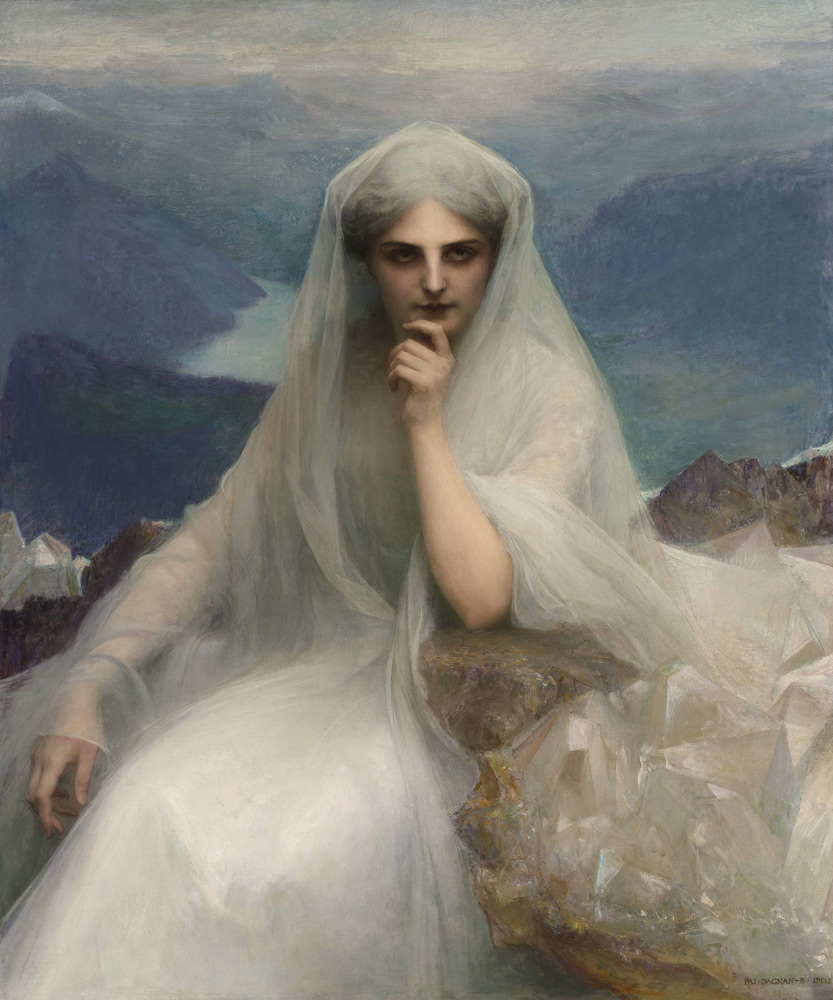
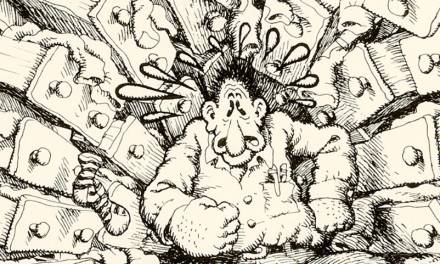
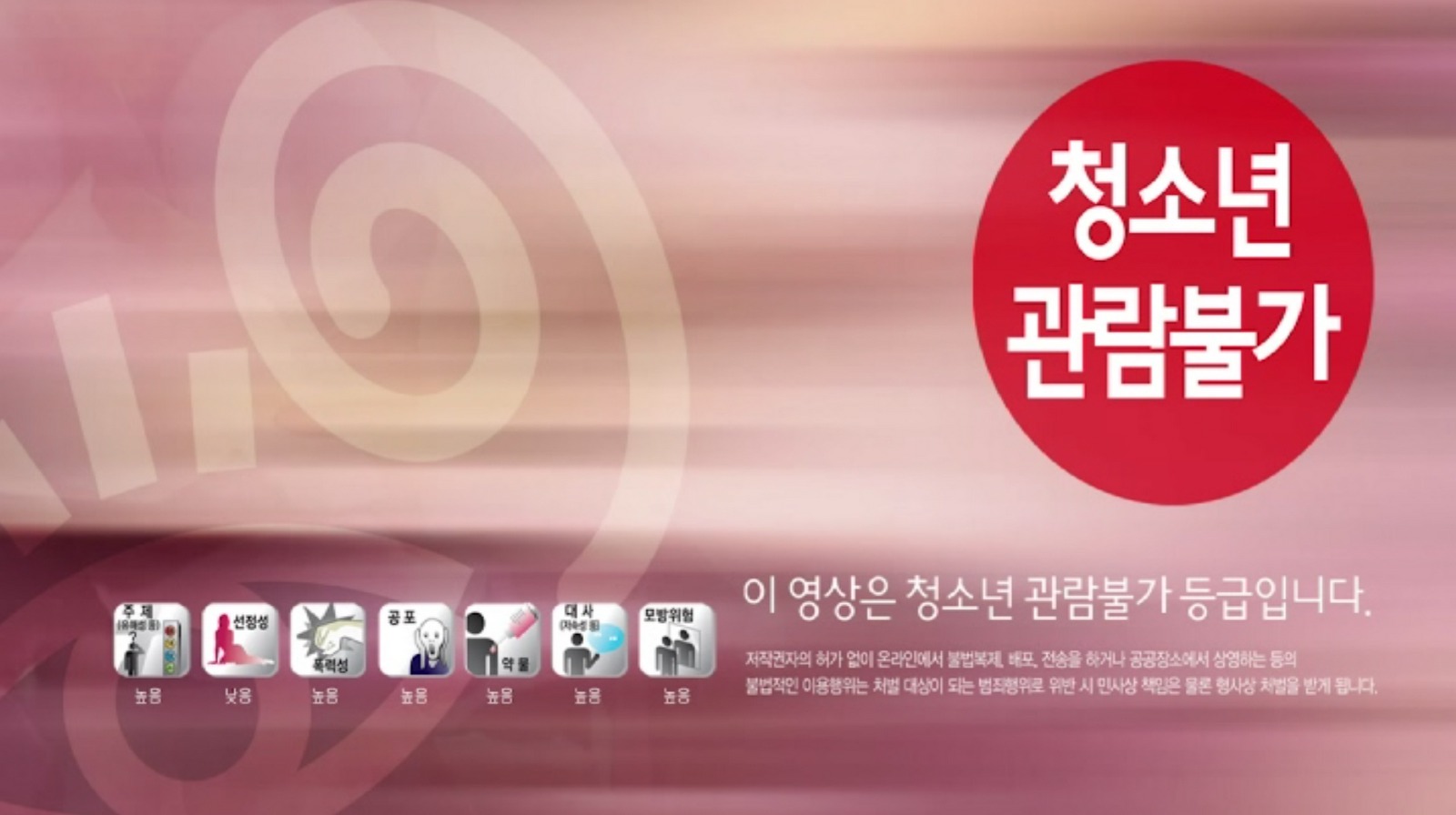
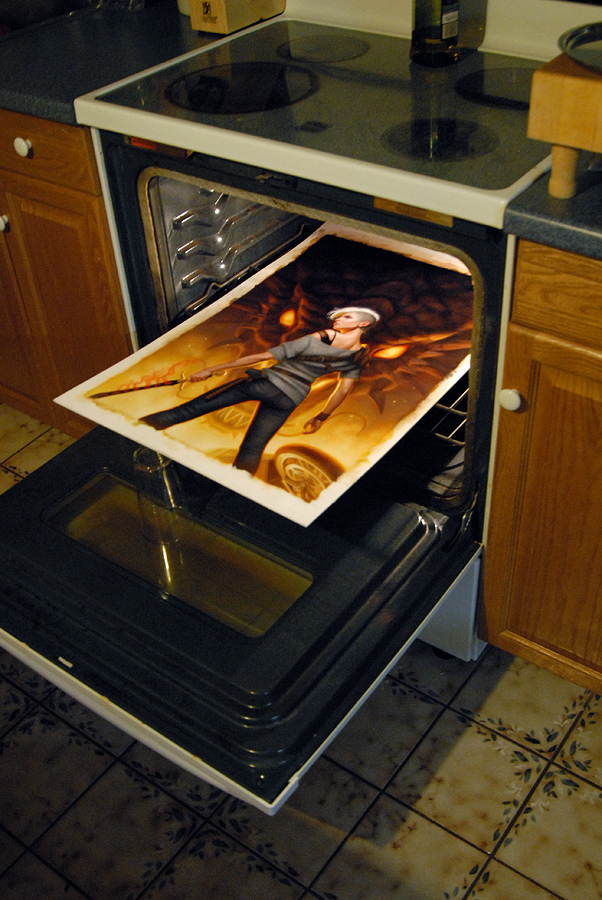

Imperator Furiosa? Rey? Ha! Lauren puts them to shame! (Great post, LP!)